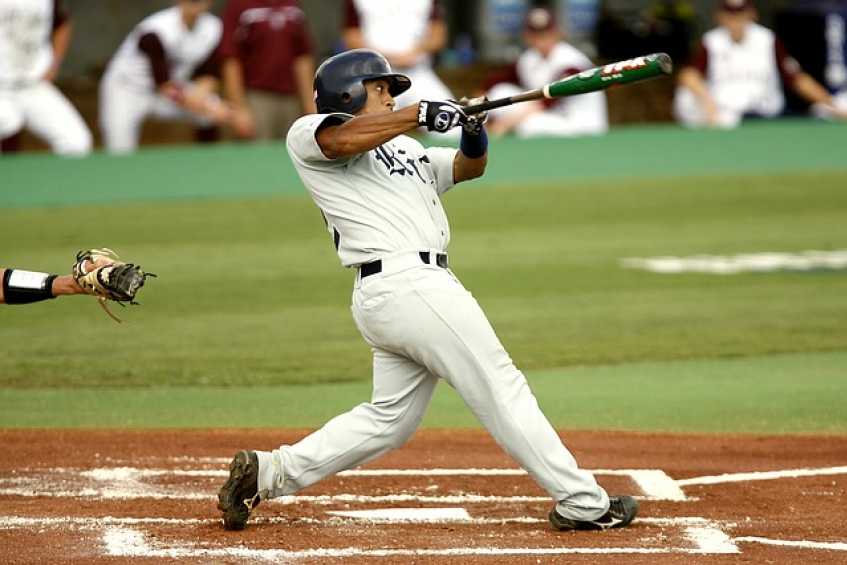
Today we will be diving into the world of baseball statistics and discussing the concept of ops. Short for on-base plus slugging, ops is a widely used metric in baseball that combines a player's ability to reach base with their power-hitting abilities. Whether you're a seasoned baseball fan or just starting to learn the ins and outs of the game, this post will provide a comprehensive overview of what ops is and how it's used to evaluate a player's performance on the field.
Key Article Points
OPS, which stands for On-base Plus Slugging, is a baseball statistic that is calculated by adding a player's OBP and Slugging Percentage.
The OPS Baseball is utilized to evaluate a hitter's performance at the plate.
OPS gives an indication of a major league baseball hitter's capability to generate runs.
An above-average season at the plate is indicated by an on base percentage + slugging of .800 or higher in baseball at the major league level.
Weighted On-base Average (wOBA) and Weighted Runs Created Plus (wRC+) are considered to be more accurate metrics for determining a hitter's abilities than on base plus slugging percentage.
On-base Plus Slugging (OPS) is a statistic that combines a player's On-base Percentage (OBP) with their Slugging Percentage (SLG percentage) to evaluate their offensive performance. A player's OBP is calculated by dividing the number of times they reach base (via hits, walks, or hit by pitch) by their number of plate appearances, while their SLG is calculated by dividing the total number of bases they have gained by their number of at-bats. An OPS of .800 or higher is considered to be good in baseball, indicating that a player is having an above-average season at the plate.
However, OPS is not a perfect statistic and does not consider a player's defensive abilities or base-running skills. More accurate metrics such as Weighted On-base Average (wOBA) and Weighted Runs Created Plus (wRC+) are also used in baseball analysis. These statistics take into account the relative value of each type of hit and walk, rather than treating all hits and walks as equal. Despite this, OPS remains a widely accepted and used statistic in baseball analysis and is still considered a good measure of a player's offensive performance.

On-Base Percentage (OBP) is a key baseball stat that reflects how often a player gets to a base safely. OBP is more valuable than batting average because it counts walks and being hit by a pitch, which means a player with a high OBP could have a lower average but still be a valuable offensive player. OBP is also a vital component of the On-base Plus Slugging (OPS) metric, which offers a more complete picture of a player's performance on offense.
Slugging in baseball is an important statistic that measures a player's ability to hit for power. The Slugging Percentage (SLG) is calculated by dividing the total number of bases a player has earned from hits, including home runs, doubles, triples and singles, by the total number of at-bats. It is a much better measure of a hitter's power than average because it takes into account extra base hits. A high slugging percentage indicates that the batter is able to hit for more power than other players and can be used to compare hitters across different eras.

An OPS above .800 is a strong predictor of a player's offensive prowess and is often associated with leading in runs scored, RBIs, and home runs in their respective leagues, as well as being chosen for All-Star teams and winning prizes. Conversely, an OPS below .700 is seen as below average offensive effectiveness, indicating difficulty reaching base or having strong swings. However, it's important to recognize that an OPS is not the sole measure of a player's total contribution to their team, as some players with lower OPSs may still be valuable as strong baserunners or defensive players.
OPS is calculated by adding a player's on-base percentage (OBP) and their slugging percentage (SLG). To calculate a player's OBP, the formula is: (Hits + Walks + Hit-by-Pitch) / (At-bats + Walks + Hit-by-Pitch + Sacrifice Flies). This measures how often a player reaches base safely, through hits, walks, or hit-by-pitches. To calculate a player's SLG, the formula is: Total Bases / At-bats. This measures the player's power, by calculating the total bases per at-bat. Once a player's OBP and SLG are calculated, they are added together to give the player's OPS.
For example, if a player has a .350 OBP (reaches base safely in 35% of their plate appearances) and a .450 SLG (gets .45 total bases per at-bat), their OPS would be calculated as follows: .350 + .450 = .800. This is considered to be an excellent OPS, as it is above the league average of around .750.

OPS in baseball only accounts for a player's performance, making it a flawed metric since it doesn't consider a player's defensive skills. Additionally, the statistic doesn't adjust for the league or stadium where the player performed, which can affect offensive performance. Furthermore, OPS, while it combines on base percentage and slugging percentage, does not combine OPS and slugging percentage equally. On Base Percentage and SLG equally; the SLG term is multiplied by 1.8 to give more weight to power figures. This means that a player with a lower average but a strong OBP can have a lower OPS than a player with a higher average but less power and a high slugging average.
Yes, sacrifice flies do count towards a player's plate appearances for calculating their on-base percentage.
OPS in baseball is calculated by adding a player's On-Base Percentage (OBP) and their Slugging Percentage (SLG). The formula for OPS is:
OPS = OBP + SLG
To calculate OBP, you take the number of times a player reaches base (via hits, walks, or hit by pitch) and divide it by their total plate appearances. The formula for OBP is:
OBP = (Hits + Walks + Hit by Pitch) / (At Bats + Walks + Hit by Pitch + Sacrifice Flies)
To calculate SLG, you take the total number of bases a player has gained (1 for a single, 2 for a double, 3 for a triple, and 4 for a home run) and divide it by their total at-bats. The formula for SLG is:
SLG = (1B + 2 x 2B + 3 x 3B + 4 x HR) / AB
Once you have calculated both OBP and SLG, you simply add them together to get the calculate OPS for a player.
Yes, because a players on-base percentage or OBP is part of the calculation for OPS Stats, then walks are counted in OPS.
As of today, the highest career OPS record holder is Babe Ruth with a career of 1.164. Babe Ruth also holds the slugging record and is second or third in other hitting areas. Babe Ruth is considered by many as the greatest power hitter of all time.
Josh Gibson, at only the age of 25, has the highest single-season OPS with an astounding 1.4744 OPS in 1937.
In 2004, Barry Bonds recorded a 1.422 OPS with a ridiculous batting average. Barry Bonds record regarded by many as the true single season record as the era and statistics were different in 1937 vs 2004; however, in general Barry Bonds career is muddied under the steroids era of baseball. Either way it's one of the greatest feats by any Major League players in history.
Want to learn more about batting average? Check out our Batting Average Calculator!
As of 2022, Mike Trout has a lifetime OPS of 1.002 and is always above the league average slugging percentages. Mike Trouts speed aids in his hitting as he is often able to extend extra base hits in almost every other baseball game.
In conclusion, OPS gradually spread is a valuable statistic for evaluating a baseball player's performance on offense. It is calculated by adding a player's OBP and their slugging percentage, which provides a comprehensive measure of a player's ability to get on base and hit for power. It is considered to be a more accurate indicator of a player's overall offensive value than batting average alone, as it takes into account other ways a player can reach base and doesn't give any indication of a player's power. Additionally, advanced statistics like OPS+ and wRC+ adjust for different ballparks and different eras, and they allow a fairer comparison of a player's performance across different eras and ballparks. Overall, while OPS is not the only statistic to consider when evaluating a player's overall value, it is an important one that provides valuable insight into a player's performance on offense.
There are 0 comments on "What Is OPS in Baseball & OPS Baseball Calculator"
chandler allen says:
"Hi my name is chandler, i’ve enjoyed..."
On Wanting to tryout for summer ball. as an 18 year old
david graham says:
"With no current MLB team in Canada,..."
On With no current MLB team in
Charles Chavez says:
"To All Coaches: Do you have13U or..."
On Looking for Games